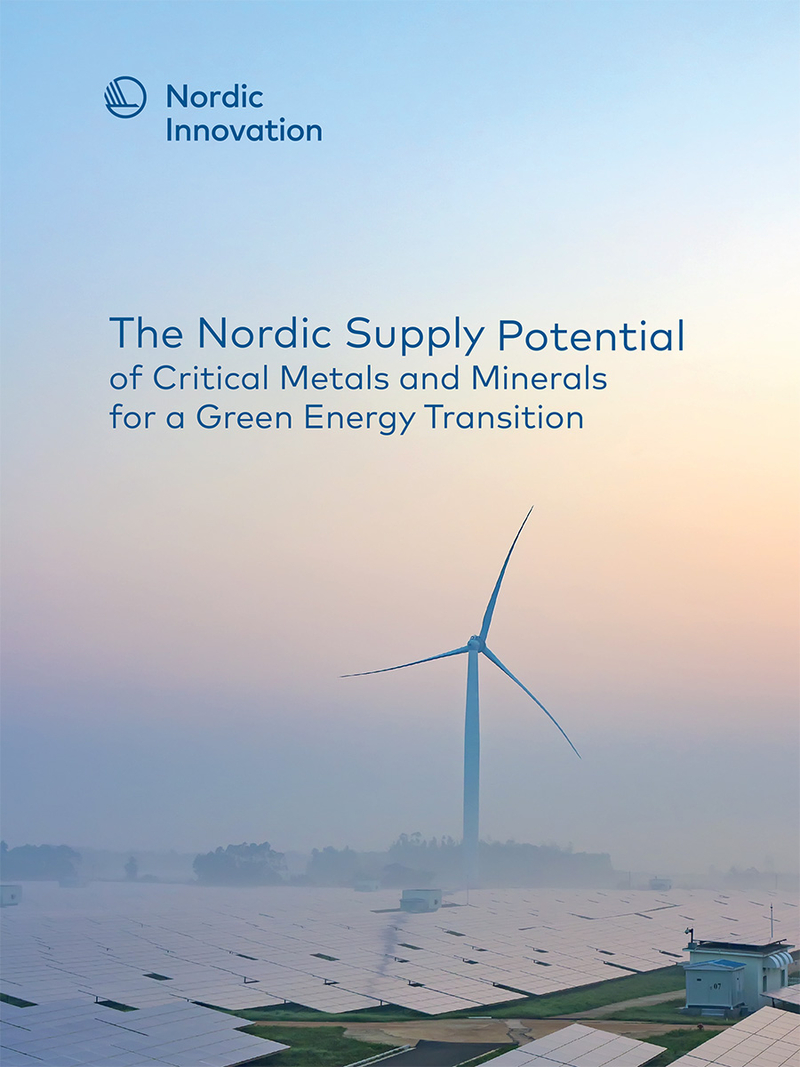The Nordic Supply Potential of Critical Metals and Minerals for a Green Energy Transition

Informasjon
Publish date
Abstract
A new report from Nordic Innovation shows that the Nordics have a large and untapped potential as a sustainable supplier of the raw materials the world needs to become a low-carbon emission society.The green energy transition is crucial to achieve the climate goals, and it involves a transition from non-renewables to renewables-based production, storage, transmission and use of energy. At the same time, we see an increased need for minerals that are crucial in the production of most of the technologies that are central in achieving this transition, like batteries and windmills. Today, there are not enough raw materials available to meet the basic demands needed to implement the world’s climate action plan. The EU has defined certain raw materials, which are important for the economy and associated with supply risks, as critical raw materials (CRM). In addition to the fact that the Green Energy Transition is dependent on several CRMs, these raw materials are also used in existing industries and technologies, which entails fierce competition for them. We also know now that todays’ extraction and the current and forecasted recycling of CRM is not able to meet the total demand of transition to a low-carbon society and to mitigate climate change. For example, International Energy Agency (IEA) forecasts that the global demand for lithium and graphite, which are among of the most important raw materials for electric car batteries, will probably be 40 times higher by 2040 if the world is to reach its climate goals. Even complete recycling of used car batteries will only cover 10 % of the demand for minerals such as copper, nickel, lithium and cobalt, according to the IEA forecast. The new report shows that the Nordics has a major potential in their bedrock to provide a secure supply of almost the full range of metals and minerals needed for the Green Energy Transition. In mineral-richness, the Nordic bedrock can be compared with the most mineral-rich areas of the world, such as Canada, the USA, Brazil and Australia. The mineral deposits represent an unexploited economic potential in our region; we already have the mining experience and technology, and knowledge about unexplored raw materials could give better utilization of and added value to existing mining operations and to our industries. The publication is part of the program Sustainable Minerals by Nordic Innovation.Geological Survey of Finland, Geological Survey of Sweden, Geological Survey of Denmark and Greenland, Ministry of Mineral Resources of the Government of Greenland, Geological Survey of Norway, Norwegian Directorate of Mining, Reykjavik University, and National Energy Authority of Iceland are responsible for its content.
Organisation